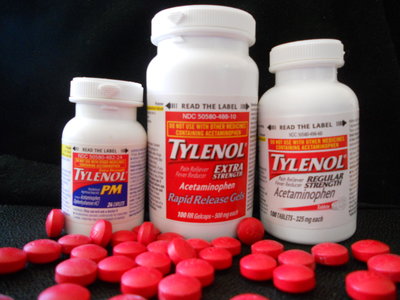This week Dr. Loretta Yuen introduces you to poisons in your purse.
If your purse is anything like mine then it will be a seemingly bottomless pit of ‘things’ that may come in handy at some point. In my purse you can find Kleenex, pens, loose change, crayons and scrap paper for the kids, and extra poop bags for my dog. When my children were toddlers you would definitely find a box or two of raisins knocking around in there. Now you may likely find a pack of sugarless gum or a half eaten chocolate bar.
When I saw my dog with her nose in my purse the other day trying to help herself to something tasty I realized some of the seemingly benign things I keep in my purse are toxic to my pets if ingested.
Raisin and chocolate toxicity I blogged about last week in my discussion of Toxic Foods. This week I want to focus on 3 common items we may have in our purse, bag or kitchen counter that we need to keep away from our dogs or cats.
Sugarless gum
Sugarless gum often contains Xylitol as the sugar substitute. For people, Xylitol is great in gum as it provides the sweetness without the tooth decay effects of sugar and may also have antibacterial properties in the mouth so as to reduce periodontal disease. However if ingested by your dog xylitol is potentially lethal.
Xylitol, when ingested by your dog, causes insulin to be released leading to a drop in blood sugar. Depending on how low the blood sugar drops this can lead to weakness, disorientation, tremors and potentially seizures. Symptoms typically begin within 30 minutes after ingestion and can last for more than 12 hours. Vomiting and diarrhea can also occur.
It does not take many pieces of gum to poison a dog, especially a small dog. A dose of 0.1 grams per kilogram of body weight can cause hypoglycemia (low blood sugar). A typical piece of gum contains 0.3 to 0.4 grams of xylitol which means that a 5kg dog could be poisoned by as little as a 1.5 pieces of gum.
Besides causing hypoglycemia, xylitol can also lead to liver failure in dogs if ingested at doses greater than 1 gram per kilogram of body weight. In the example of the 5kg dog, liver failure could occur if he found an unopened package of gum and ate it all.
Ideally the patient should be seen within 30 minutes of ingestion and can be made to vomit the gum. If the ingestion is noticed after this window, blood sugars will need to be monitored and a dextrose (sugar) intravenous drip will be started until the blood sugars normalize. Liver enzymes and blood clotting tests may need to be monitored for 2 to 3 days as well depending on the amount ingested.
Acetaminophen (aka Tylenol or Panadol)
Acetaminophen causes liver damage (hepatotoxicity) as well as red blood cell damage (methemoglobinemia) in dogs and cats. Cats are extremely susceptible to the toxic effects of acetaminophen in that a single dose of acetaminophen at 10mg/kg can cause clinical signs. In other words, a typical 5kg cat could develop toxicity by ingesting as little as 1/7 of a tablet of Regular Strength Tylenol.
In dogs, acetaminophen can be used to provide pain relief at a dose of 10mg/kg every 12 hours. Clinical signs or toxicity are not typically observed in dogs unless the dose exceeds 100mg/kg.
Clinical signs of acetaminophen toxicity are related to red blood cell damage (methemoglobinemia) and liver damage (hepatotoxicity) and include lethargy, weakness, rapid or shallow breathing, cyanosis (blue gums), icterus (yellow tinged gums or skin) and vomiting. Face or paw edema (swelling) is another common sign.
Signs of acetaminophen-induced red cell damage may occur within 2-6 hours of ingestion of the drug, while signs of liver damage may take up to 72 hours to develop.
Toxicity is confirmed via blood work where methemoglobinemia (brown-coloured blood), anemia and elevated liver enzymes are noted. Treatment of acetaminophen toxicity involves a variety of different medications. The objective of the treatment will be to reduce the metabolism of the acetaminophen, support the damaged liver and to help the body convert the abnormal red blood cells back to normal red cells.
Cigarettes
Tobacco products contain varying amounts of nicotine with cigarettes containing 13-30mg and cigars containing 15-40mg. Butts contain about 25% of the total nicotine content. The minimum lethal dose in dogs and cats is reported as 20-100mg. Once ingested, signs develop usually within 15-45 minutes and include excitation, rapid breathing salivation, vomiting and diarrhea. Muscle weakness, twitching, depressions, rapid heart rate, shallow breathing, collapse, cardiac arrest and death can follow the period of excitation.
Treatment, as with all cases of recent ingestion of a toxic substance, involves inducing vomiting. However if your pet is already showing signs of excitement from the ingestion, vomiting is contraindicated because it can trigger a seizure. Giving activated charcoal will also help absorb the nicotine. Your pet is then closely monitored and treated symptomatically for the signs it develops.
Although there are only three items discussed in this blog it is important to be aware of the fact that we may be carrying with us other items, which if ingested, could be toxic or harmful to our beloved pets. If your pet happens to ingest any of these items, or anything else you suspect could be harmful, call your Vancouver Veterinary Hospital or Poison Control.




